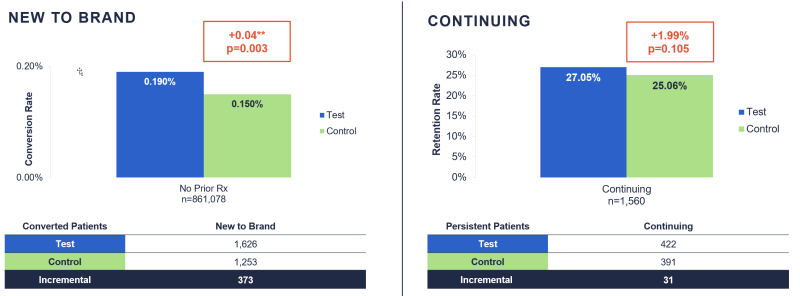Digital marketing and analytics leaders within pharmaceutical companies and advertising agencies are increasingly frustrated with the lack of visibility into what makes up campaign performance reporting. PowerPoint decks are fine for a quick business summary, but aren’t cutting it when it comes to delving further into campaign results.
Cookie deprecation, walled gardens, and modeled identity resolution leave only about 8% to 15% of your campaign impressions to measure audience quality, office visits, and patient new-starts. As a result, multiple issues can plague measurement including representativeness of the data, having sufficient data to perform accurate measurement, and the months it can take to accumulate data to start measurement.
Given these challenges, what is the best approach?
1. Reconsider ID resolution. Accurately measuring impressions will get harder as cookies fade through 2024. Even now, there are other third-party identifiers you can use to reach and measure audiences across advertising platforms and throughout the patient journey.
Identity resolution is a proven solution to cookieless marketing that connects identifiers across digital touchpoints into a single consumer identity. The process helps organizations create connections between what’s happening in the digital and offline world. Caution — some solutions are based on an identifier which is modeled from consumer attributes such as encrypted/tokenized emails and other personal information. When emails or other identifiers change, the IDs may become dated and duplicates may be unnecessarily generated.
A different approach to consider is deterministic identity resolution. It’s not only privacy safe, but significantly improves measurement capabilities, resolving 60%+ more impressions than cookies — ultimately doubling the pool of brand-eligible households and patients available for further analysis.
2. Get access to all campaign measurement data: While there may be relationships to site referrals and the number of impressions, it is much more effective to see how the campaign actually influenced HCP and consumer healthcare outcomes. Visibility into the patient journey as well as all campaign attributes, consumer demographics, and HCP characteristics can support understanding of what worked and what didn’t work in the campaign.
With deterministically resolved tokenized impression identity, impressions can be linked to de-identified medical claims data to perform a myriad of A/B testing including creation of matched control groups to test campaign performance compared to a matched cohort of consumers, including:
Office visits
- With existing diagnosis
- With new diagnosis
Conversions
- New patient starts for brand vs. competitors
- Continuing patients for brand vs. competitors
- Switch from/to
- Incremental lift
ROI
- Projected to total consumers exposed to campaign
- Patient lifetime value (LTV)
- Investments attributed and optimized
Sample results:

It’s always great to see that your campaign is performing well. But when you are empowered to dig into what is happening with a campaign, knowing why or how to make improvements is better. Say there’s a large group of diagnosed patients that are visiting the HCP’s office with the diagnosis of interest, but they are not receiving a prescription for the promoted brand. Access to the data enables exploring reasons that group of patients did not convert. Perhaps that audience is price sensitive, and you need options like copay cards for your next promotion.
One of our clients used their campaign data to uncover the fact that the patients most likely to convert had visited their ophthalmologist within the past 180 days. They were able to build this data point into their model for future campaigns.
- Were the selected channels and partners engaging to your audience and did they lead to the patient taking the next step in the diagnostic or treatment journey?
- Did the creative and messaging match and engage the audience of interest? Did you align it with the consumer’s lifestyle, healthcare, and social equity challenges? Are they grandparents who have pets and older children at home or do they live in urban areas and struggle with getting safely to their healthcare provider.
- Did the demographics of the intended audience match the selected media? The difference in channel preferences become stark between the generations.
- Did the creative engage the audience? Aging boomers may not be able to see a banner ad with small print on a mobile phone, but could be engaged by a larger format ad on their tablet or laptop.
- Are there other issues which prevent a patient from being treated? Factors like doctors who lack understanding of the disease itself, payer access issues, and drug affordability can blunt the impact of a campaign.
Better measurement and access to complete campaign data and analytics leads to better insights, performance, and health outcomes for your brand and your patients.
Take your measurement abilities out of the black box. Contact a Medicx campaign expert today.